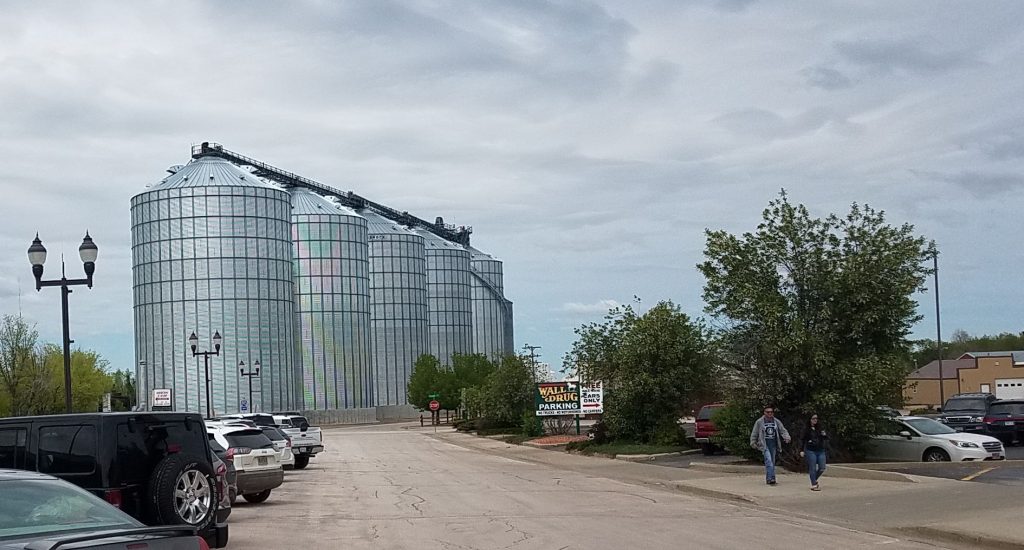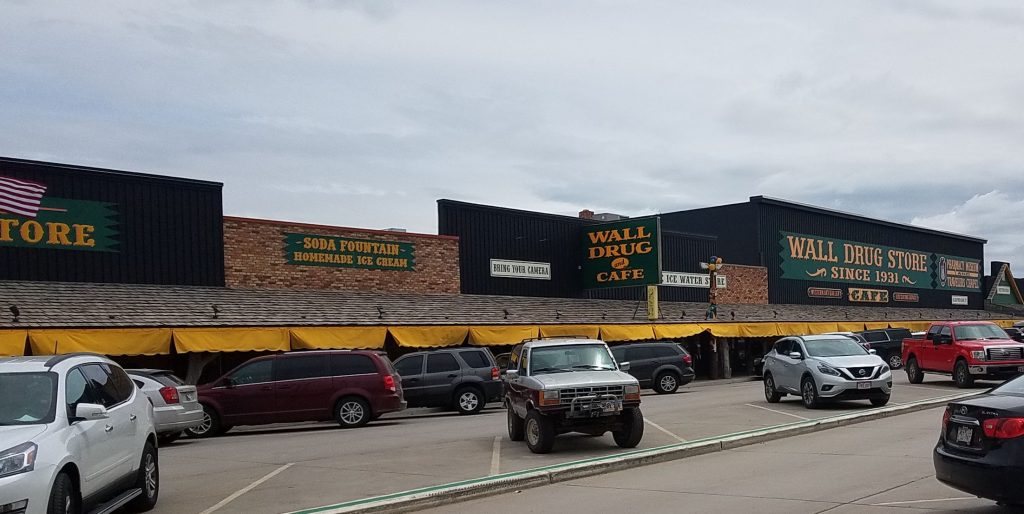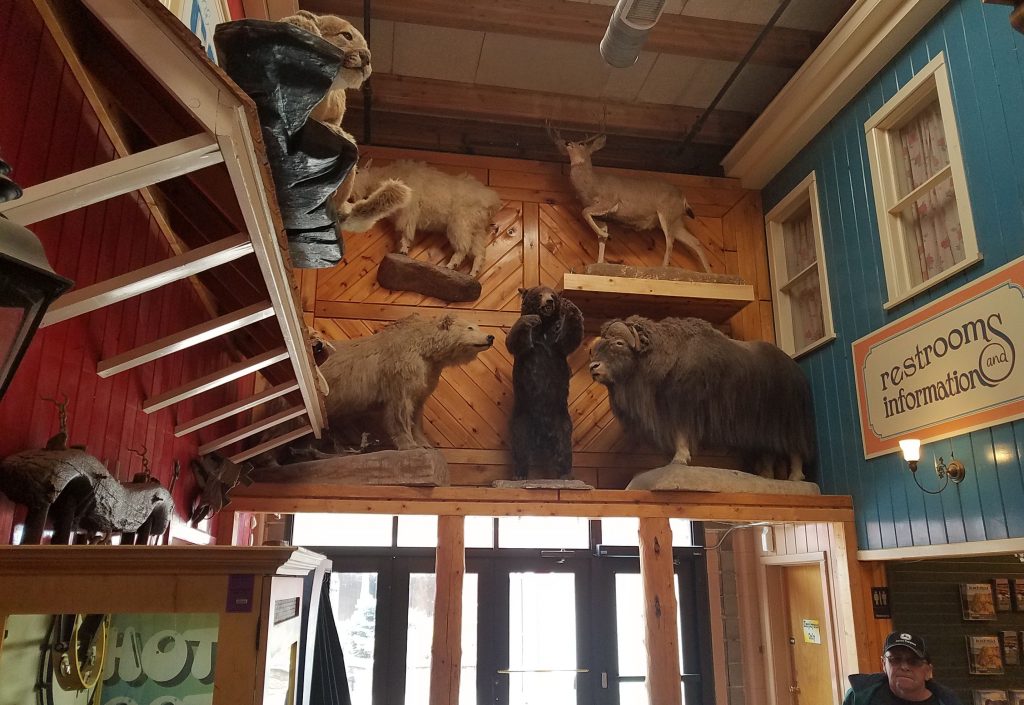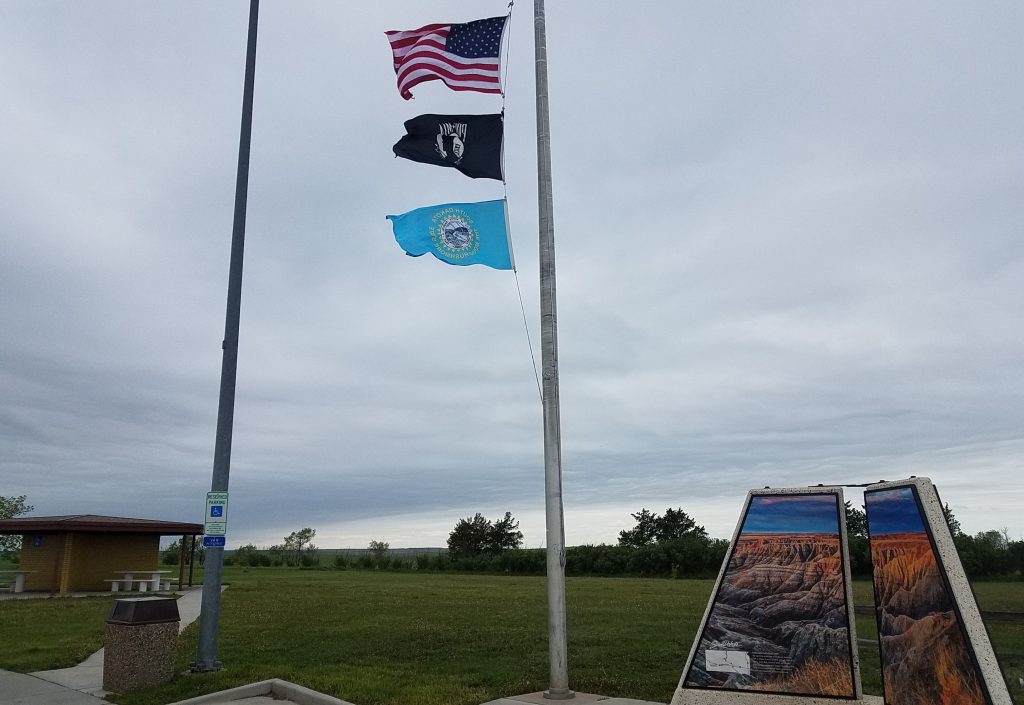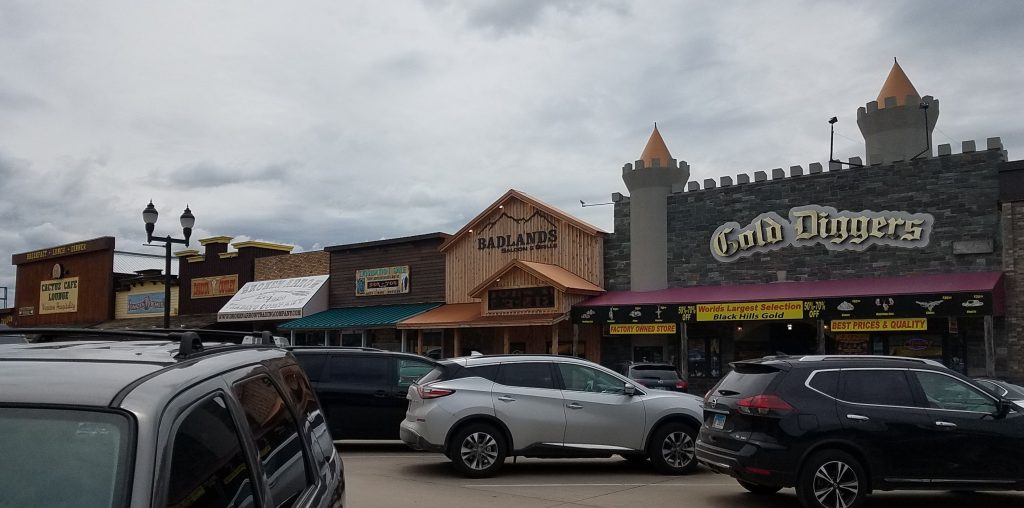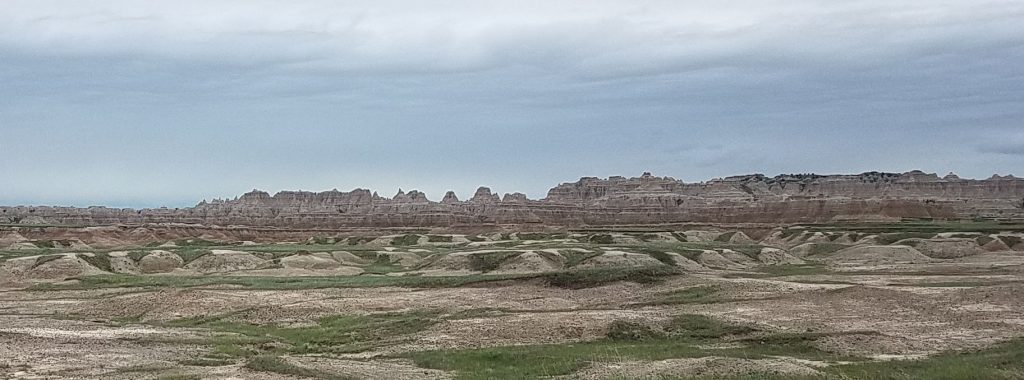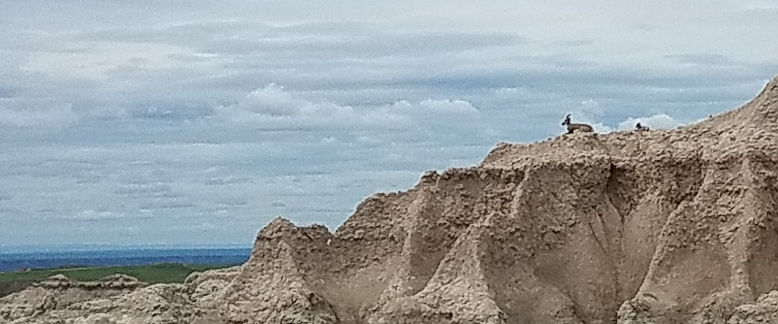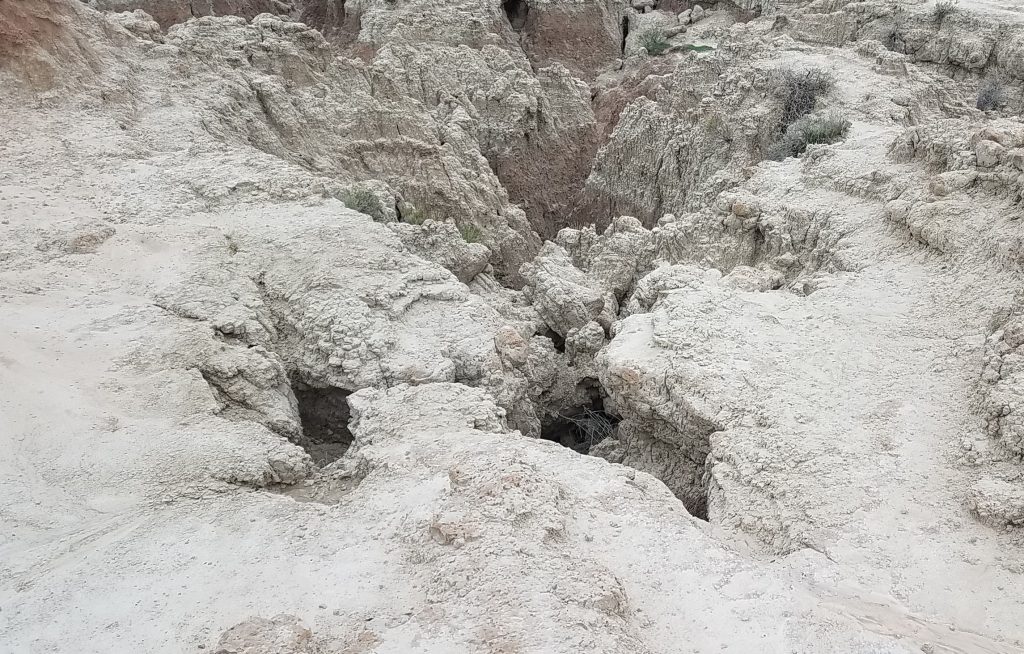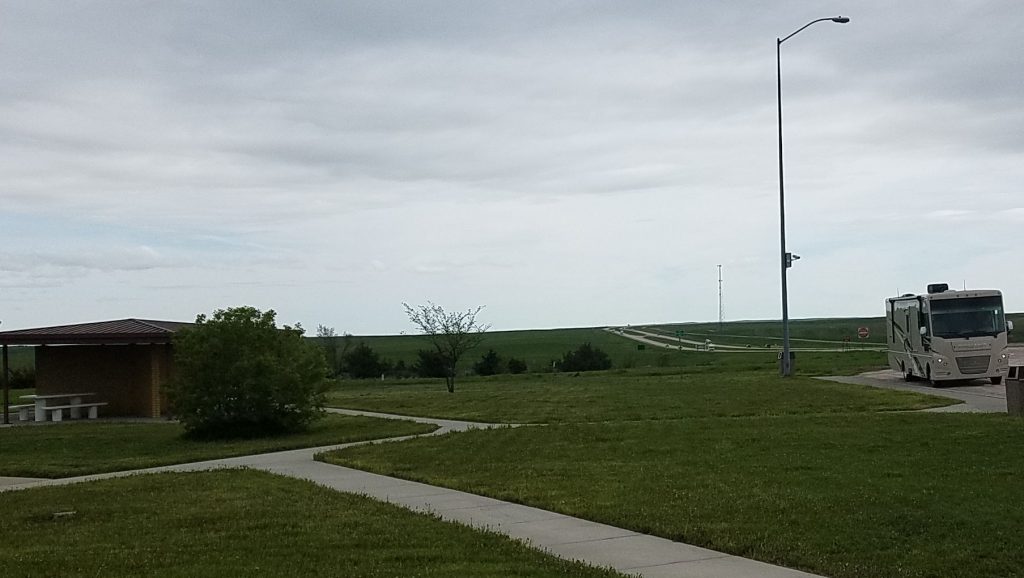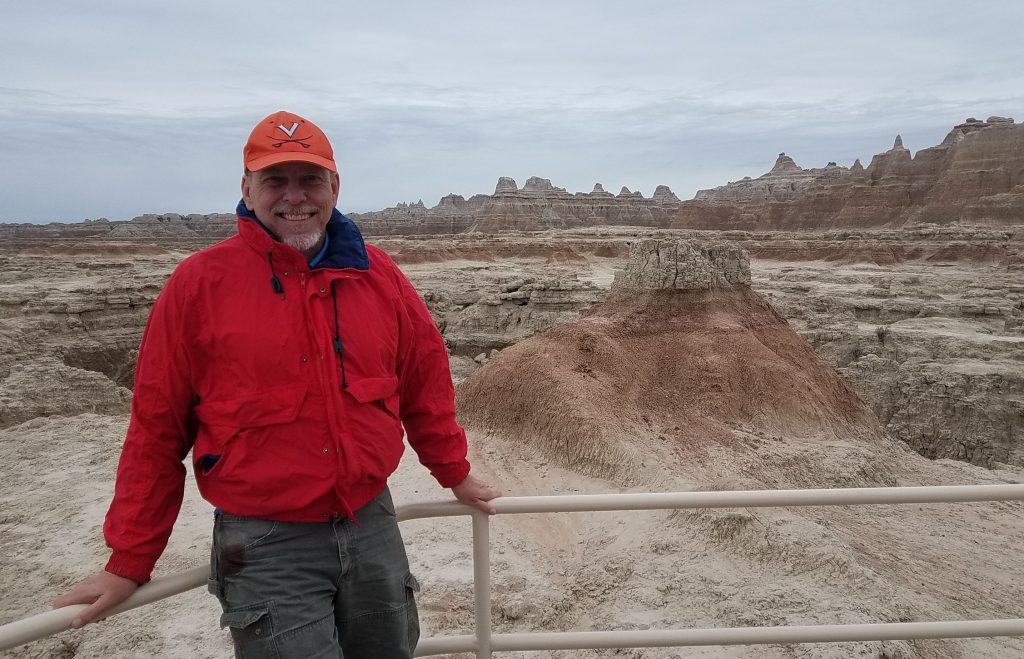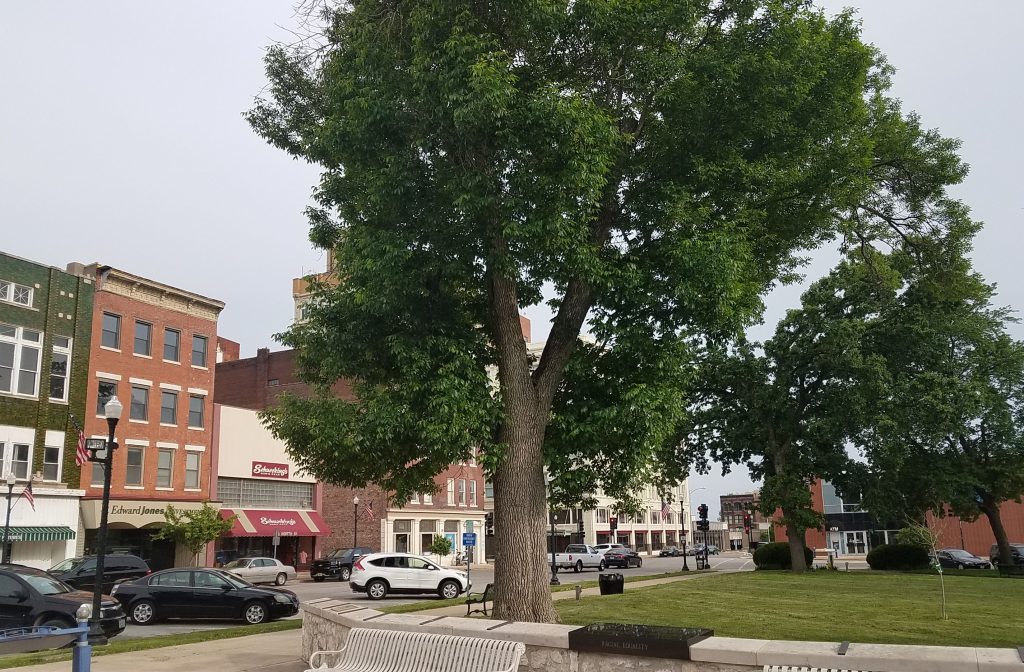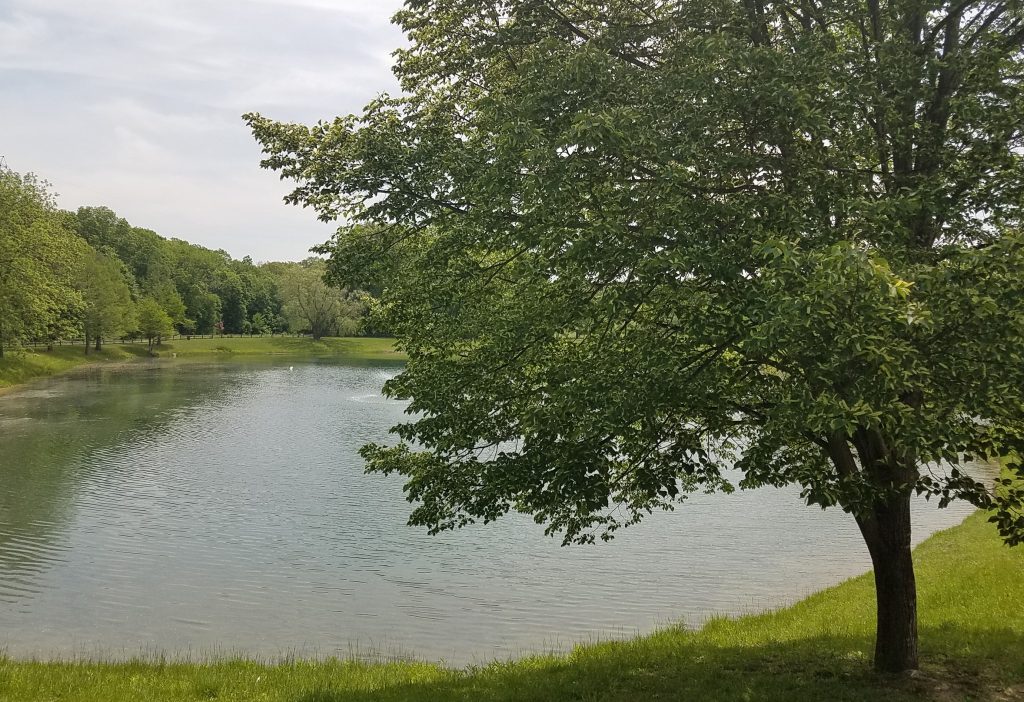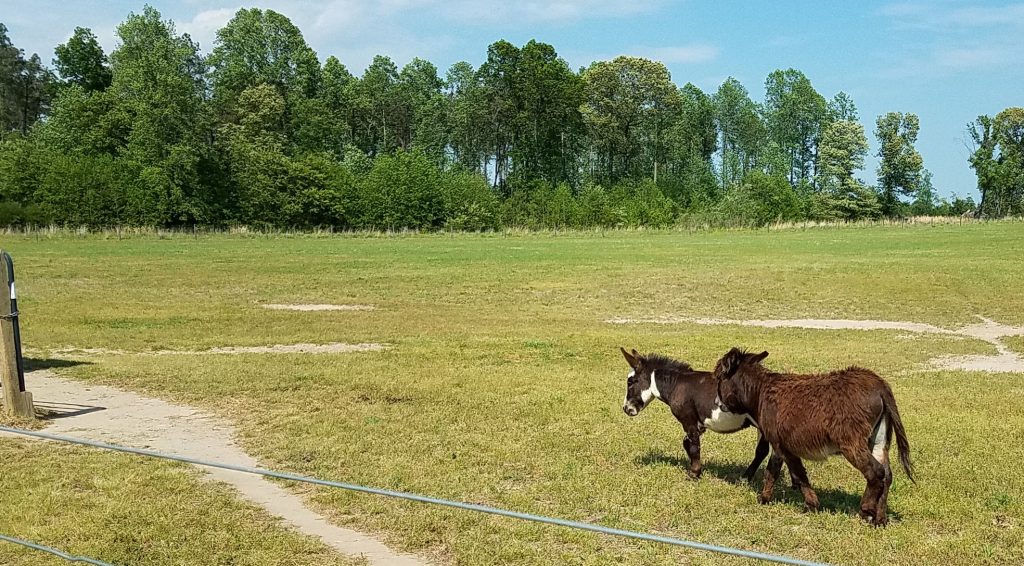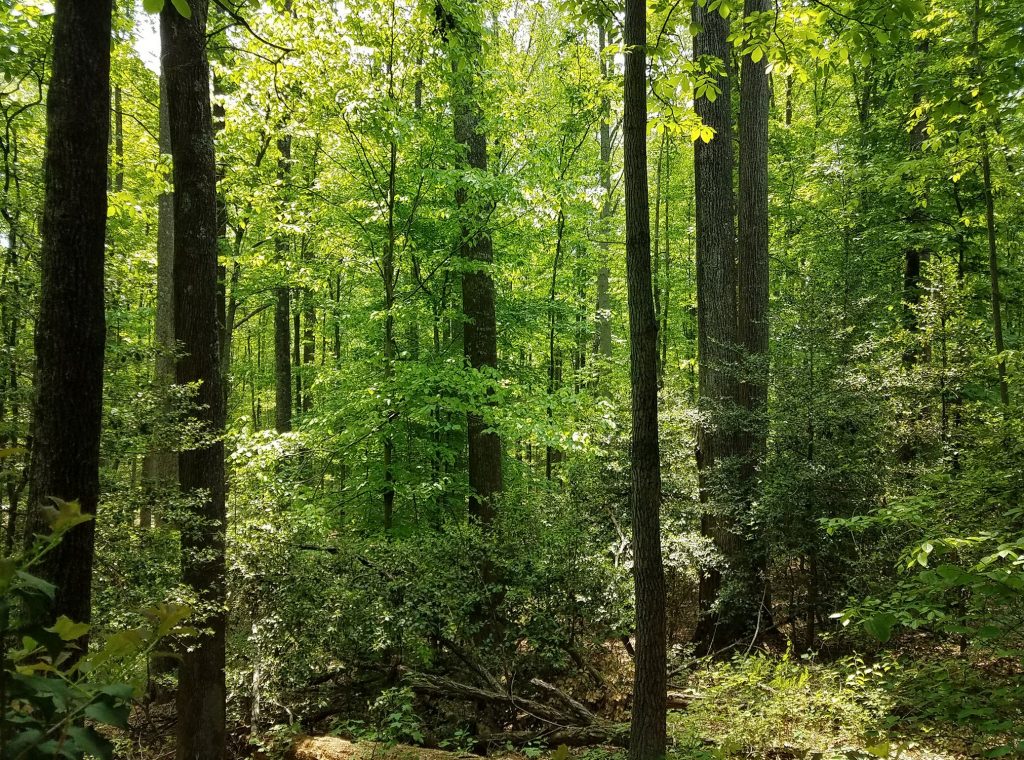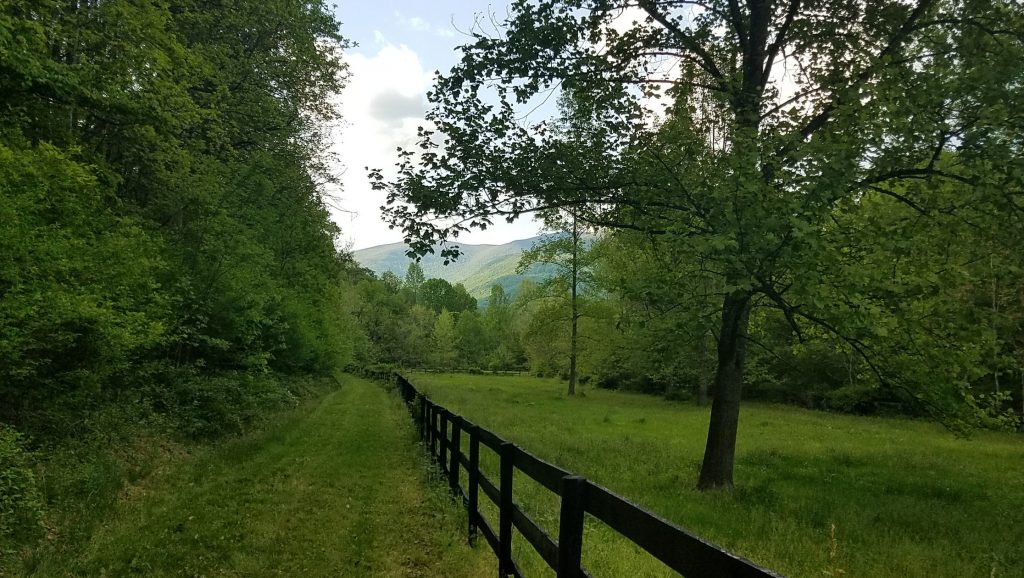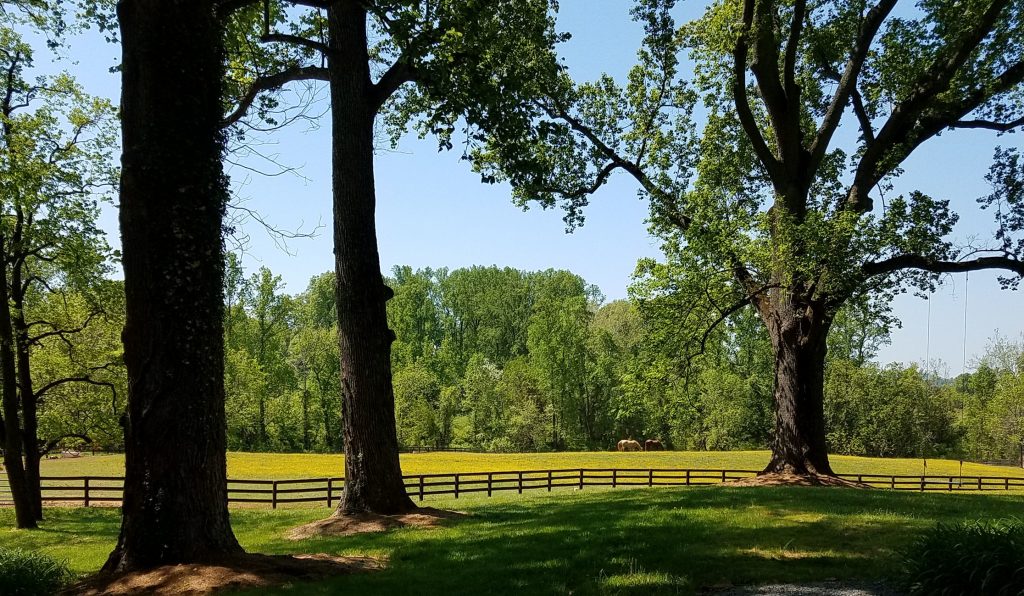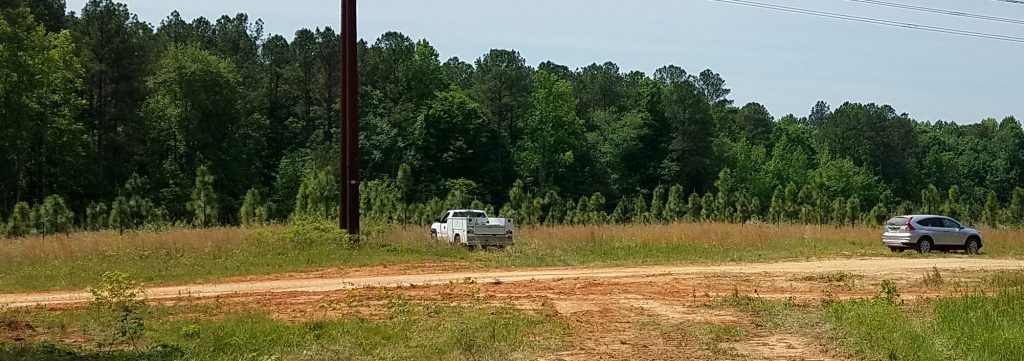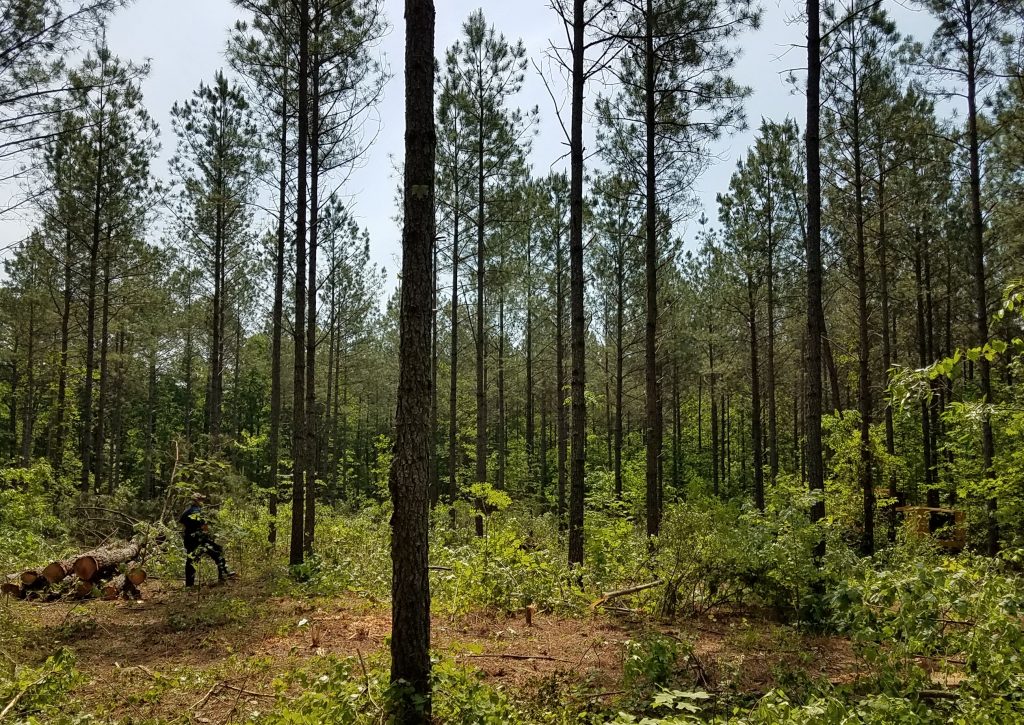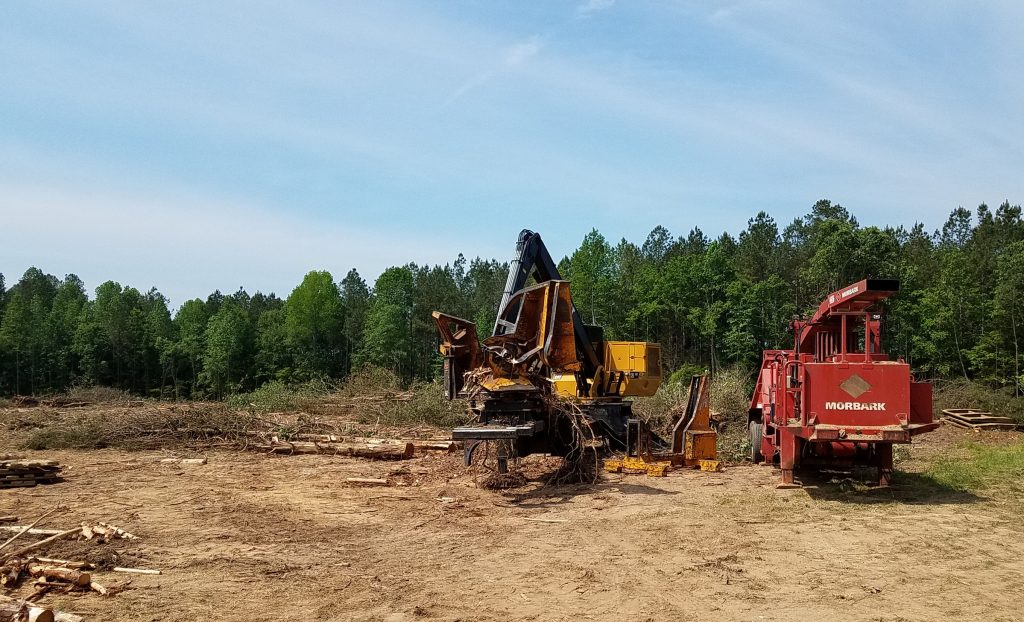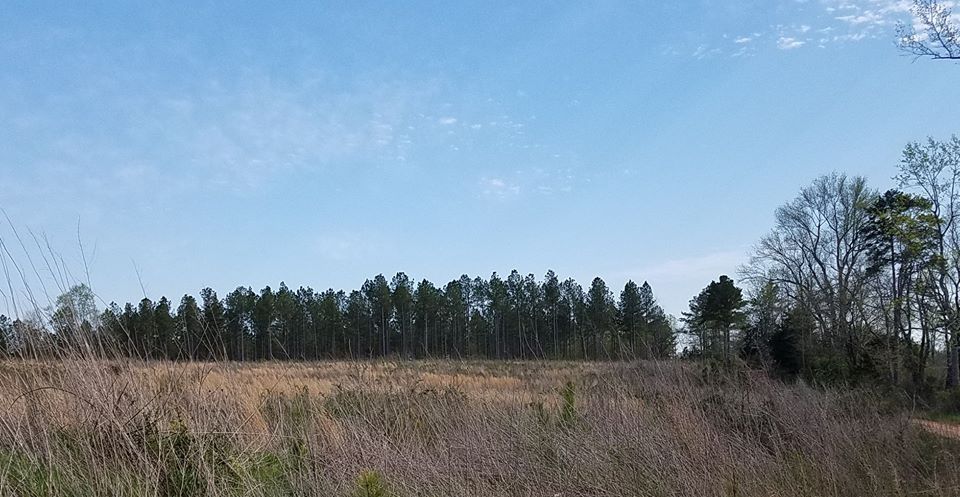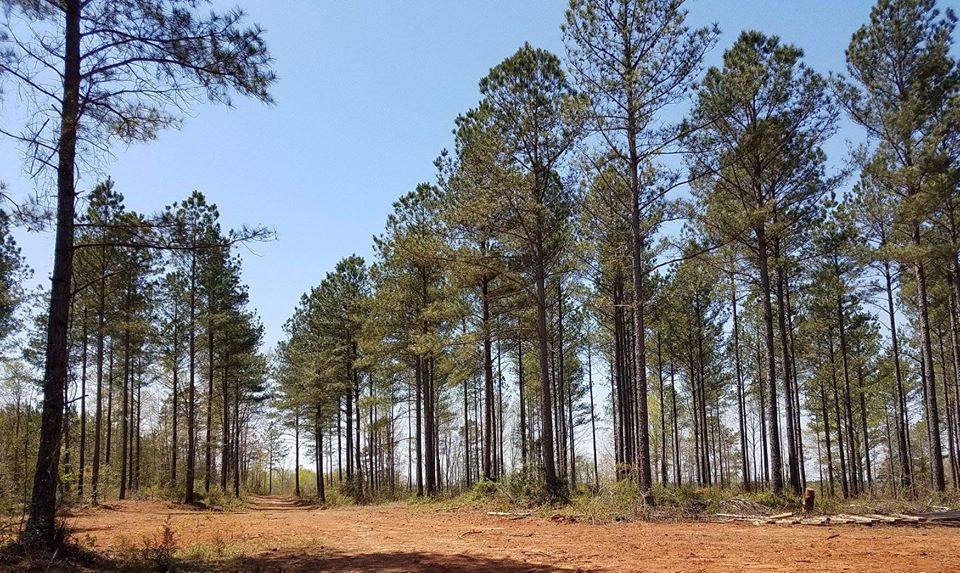Road Trip – South Dakota
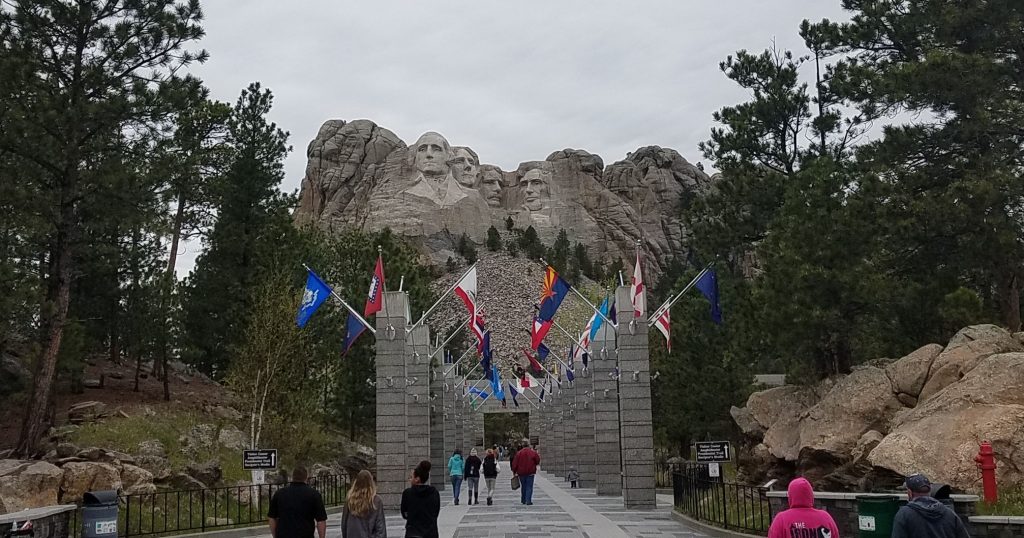
Mount Rushmore is iconic and worth seeing and worth going to see if you are nearby.
The ponderosa pine forests near Mount Rushmore were interesting. It looks like the Park Service, or Forest Service or others are doing a good job of thinning and maybe burning. We drove through here in 1997. Back then, the woods were too thick. They were asking for attack by beetles and fire and the request was, unfortunately, granted. Management looks better now.
We also went to Wall Drug. For those unfamiliar, it is a complex of kitsch. You see signs every few miles as you drive up I-90. It is not far from the highway and worth stopping. Last picture shows some silos in Wall, SD. I just thought they looked cool.

Drove across South Dakota facing a bodacious wind strong enough to worsen our gas mileage. Funny thing is that we saw lots of windmills in Iowa and few in South Dakota. Must be differences in laws or subsidies.
South Dakota presents a variety of ecosystems. The place along the Missouri River is a lot like the upper Mississippi. You go west into great flat vastness. It has been rainy lately, so it is unusually green – almost Land of Oz green.
We took a side-trip through the Badlands. They are interesting to look at and there are lots of roadside notices talking about the unique ecology, but they are really just a lot of erosion, the kind of thing you might find in an abandoned gravel pit or abused farmland. On the plus side, the area has largely left alone because it is not valuable for agriculture and it was hard to travel through. Lots of wildlife still exists here. My first and last pictures show bighorn sheep. Next is me with the Badlands in the background, followed by a closeup of some of the erosion. You can see the wind in the next picture and the green-green grass.
Driving across Ohio, Indiana & Illinois
Drove through Ohio, Indiana & Illinois. As we move west, the land becomes a bit dryer and flatter.
The death of the ash trees made me sad. Ohio & Indiana were full of ash trees. The emerald ash borer has killed most of them. There are vast ghost forests along the the highways. Ash trees were wonderful trees. They were fast growers, adaptive to a variety of conditions and resistant to many pests. Until now.
My first picture shows ash trees at a roadside, dead. Next is a living white ash tree in Quincy, Illinois. Magnificent trees. Picture after that is a very large bur oak tree and next are a grove of hickories. Last picture shows some linden trees. They are blooming and I just love the fragrance. Midwest forests with their widely spaced trees, oaks, hickories, are woods of home.
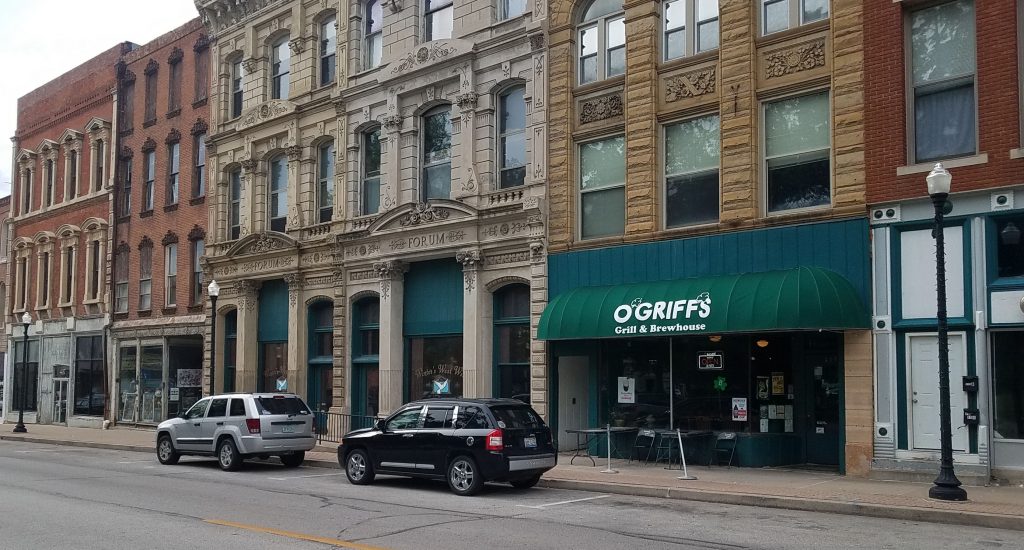
We are spending the night in Quincy, Illinois. Never heard to the place before, but it is a nice old city. It has seen better days, but is still pleasant. I didn’t know that this was a venue for one of the Lincoln-Douglas debates.
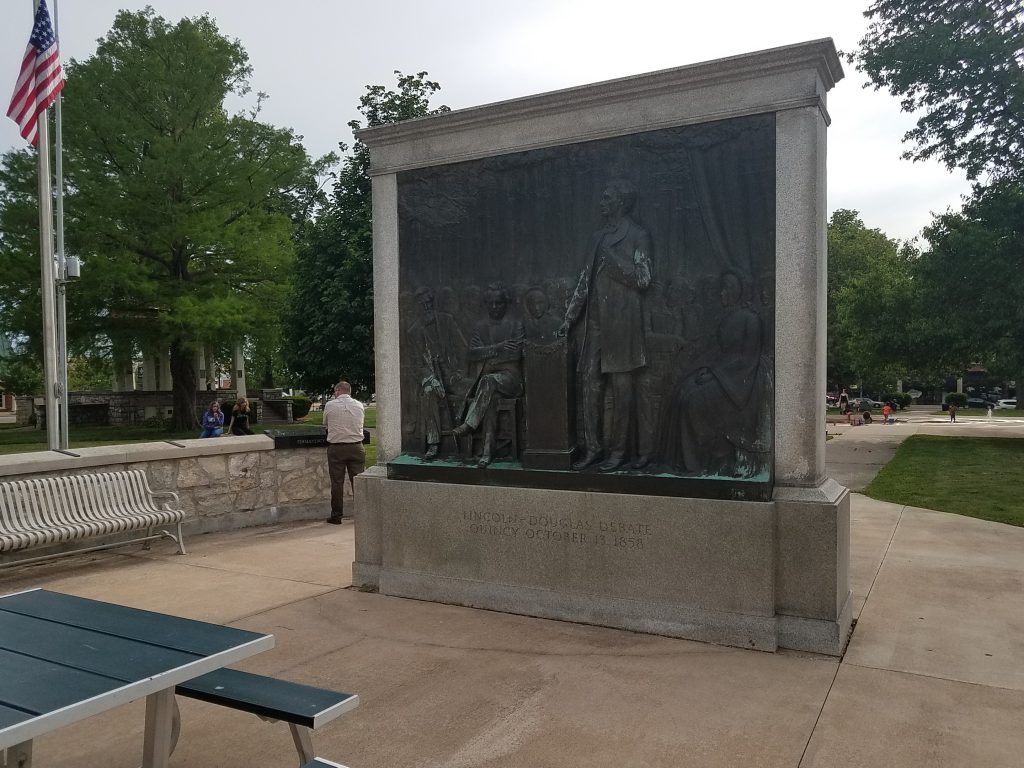
Virginia Tree Farm Odyssey
The American Tree Farm System (AFTS) assesses tree farms to make sure members are working to the high standards of sustainable harvests and regenerative forestry. As president of the Virginia Tree Farm Foundation, I got to go along.
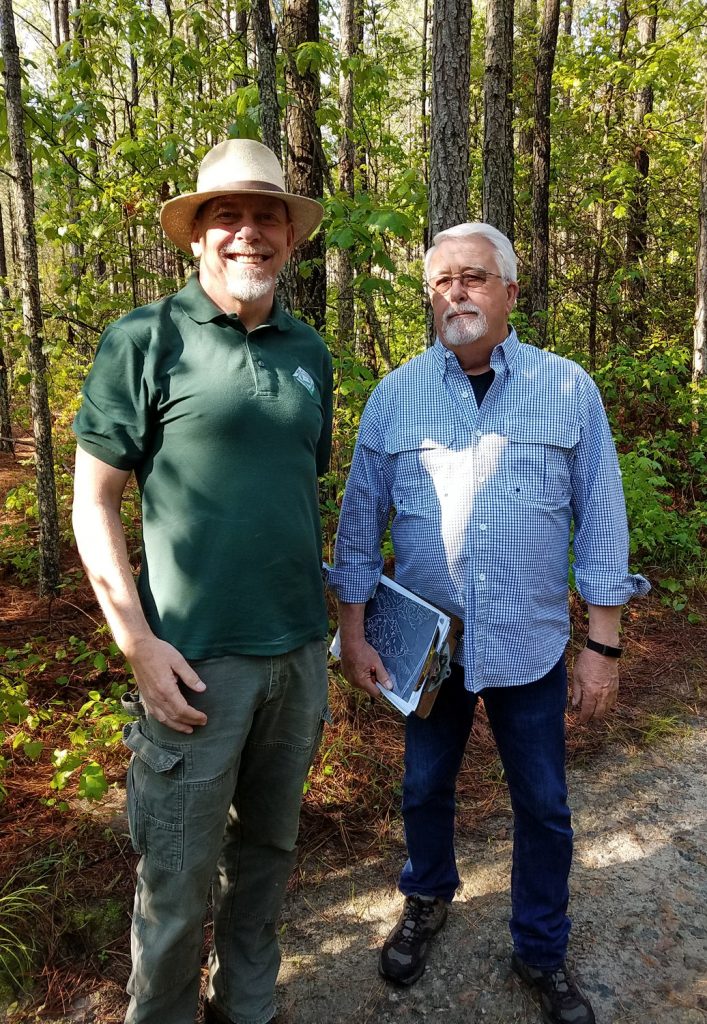
We finished our tree farm assessment trip on May 11. I am confident that Virginia passed. We have over 1000 certified tree farms in Virginia and this year Virginia is representing the southern states, so if we pass they pass too. We did a representative sample of twenty-one farms in various size classes in various places around the commonwealth. I drove a total 1,195 miles, lots of it over dusty dirt roads. But it was fun to see so much of Virginia and meet such great people.
All tree farmers harvest timber sustainably and follow the principles of regenerative forestry. We protect the water and soil on our land. Beyond that, there are varieties of goals. All the tree farmers I met wanted to make their land profitable, since otherwise few can afford to hold the land, but none were interested only in profit. Some examples are below.
One of the tree farmers we visited has as his central goal to create habitat for bobwhite quail, and he has succeeded. He burns under the pines, plants the right sorts of warm season grasses and provides cover. He doesn’t hunt the birds himself. He just likes to see and hear them.
For another tree farmer, the primary goal is to restore mature hardwood stands like yellow poplar and oak. He wants to recreate the kind of Virginia environment of centuries ago. Of course, this is not 100% possible. Unfortunately, some important trees such as American chestnuts and now ash trees no longer thrive here. But with care we can produce a good and diverse ecosystem. This will take 80 years or more, so it is a generational activity.
I met a guy whose farm had been in his family since the 1640s and another who bought his only a few years ago as a place to retire. We inspected a tree farm of more than 1800 acres, with stands of various ages interspersed with wildlife plots. We also saw one that was only twenty acres. The owner was mostly interested in having a place to sit near a stream.
Most conservation will be, must be done on private lands. When private landowners are engaged and informed they form a constituency for conservation. Beyond that, they contribute local knowledge and their own intelligence and imagination to make things better. In a complex adaptive environment – and that is nature – having lots of options and ideas is the best way to go. Tree Farm helps make this happen.
I was grateful for the help of the Department of Forestry. They know the landowners and they know the land. ATFS could not work in Virginia w/o them.
My picture shows the assessor, Jim Rochelle, and me. He is a great guy, trained as a wildlife biologist and experienced in forestry.
Below are some notes from the each day.
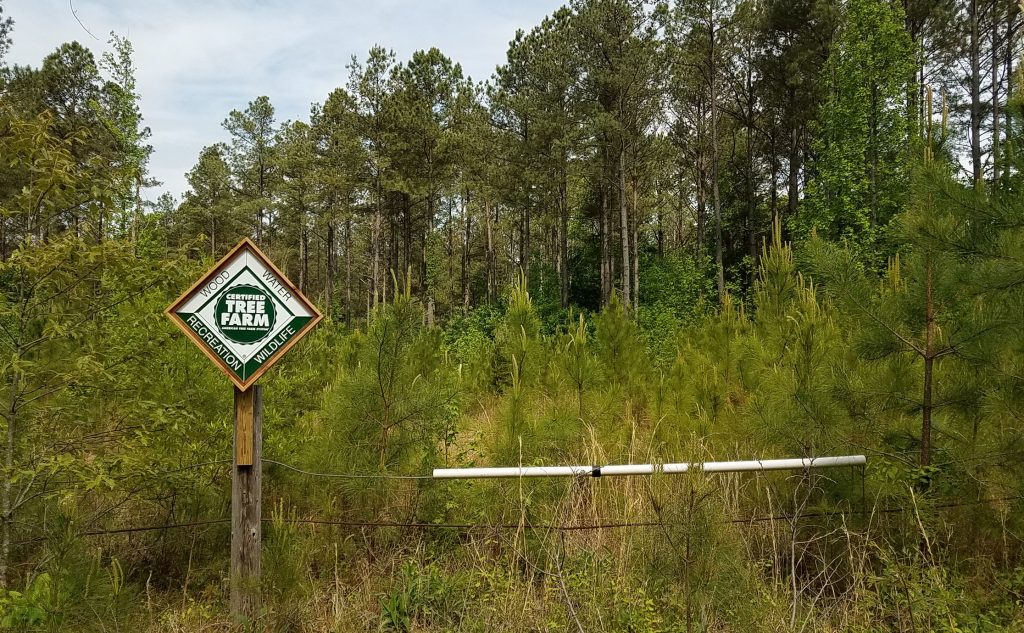
DAY 4 – Thursday May 10
We have successfully finished twenty out of the twenty-one tree farm assessments. I am confident that Virginia will not only pass but excel.
It has been great to be part of this assessment. Tree farmers in Virginia are contributing mightily to conservation on private land and I got to see it up close.
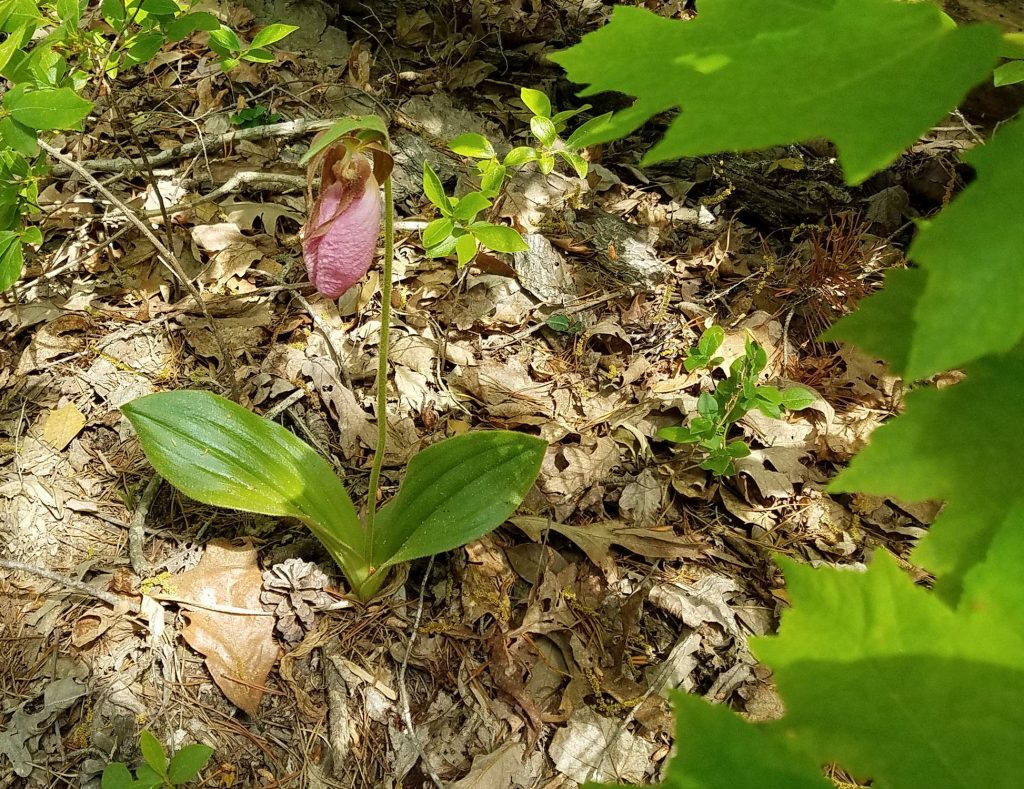
My first picture shows loblolly planted in 1987 with their volunteer progeny in front. It is a challenge not to get too many loblollies on a site. We plant the genetically better trees only to get them crowded out. I have a plan for mine, however. We planted loblolly 10×10 in Brodnax and now they are surrounded by volunteers. I figure that the ones we planted will grow faster because they are genetically better, and they have a year head start. If I burn when they are eight-years-old, if it is not too hot, the fire will thin the stand by killing the little ones, which will be mostly the volunteers. Might work.
The next picture shows yellow poplars. Hardwood forests are usually managed with natural regeneration. Yellow poplar seeds spread by the winds and can carry far. They need significant sunlight, so you need to clear some acreage. Selective cutting sounds like a good idea but usually is not good in practice. If you just take out the biggest trees, you are condemning your forest to weakness. The biggest trees are not always the oldest. Dishonest loggers will take out the best, called “high-grading” leaving those that will never get very big. And many desirable species like oak and yellow poplar will not grow in the shade.
Picture #3 is a lady slipper, a type of orchid native to North America. Next are a couple of jackasses. One of our tree farmers has lots of horses and donkeys.
————————————————————-
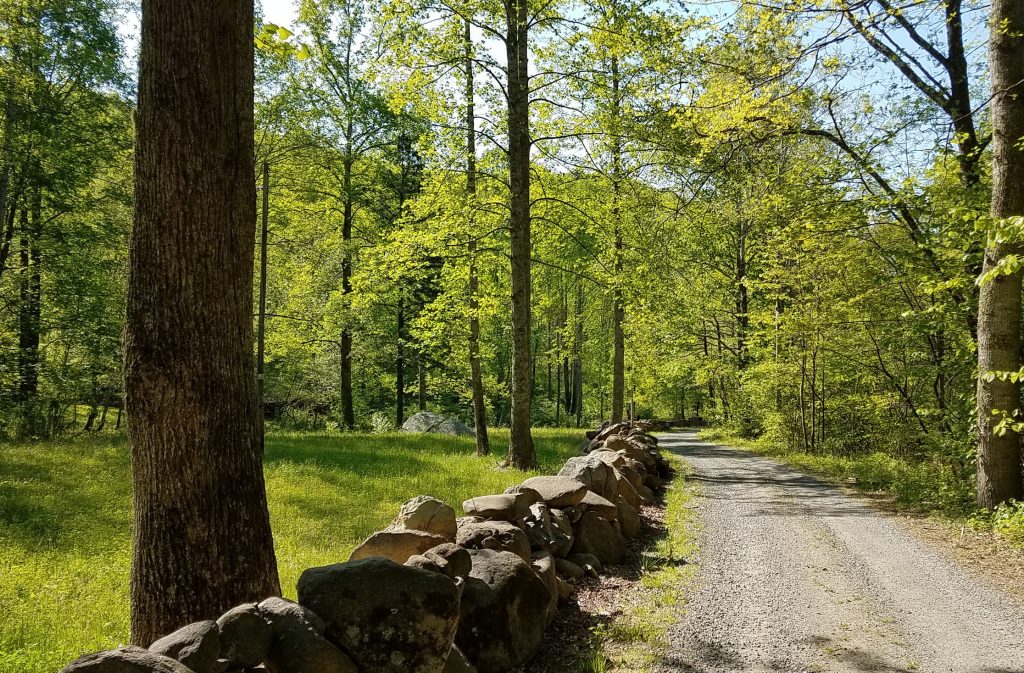
Wednesday May 9
We spent the third day of tree farm assessments around Thomas Jefferson country. This is one of the prettiest parts of Virginia & Jefferson is one of my favorite America leaders. But Jefferson country makes me think of someone much closer. Mariza graduated from Thomas Jefferson’s university. Driving around here brings thoughts of her. We came up here often to drop her off or pick her up at UVA.
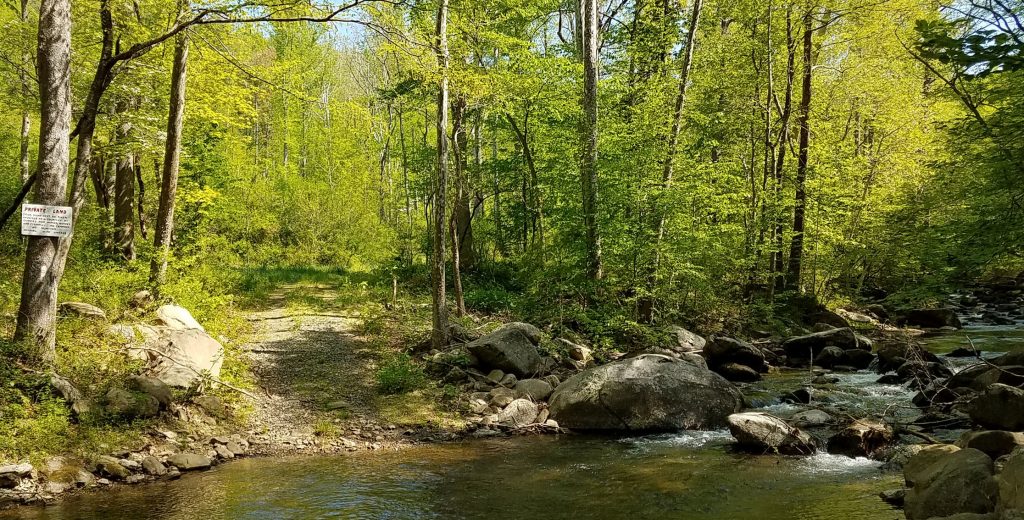
Tree farms have different characteristics in different parts of the state. In Southside the forests are mostly pine. Here in the mountains they are often mixed hardwoods. It also seems that in the mountains tree farms are part of general farms.
Jefferson (& Madison & Monroe) country is a countryside of very neat, often historical farms, now being joined by vineyards, cider makers and specialty beef and pork producers. Roads are flanked by well-maintained fences of wood or bricks. Fences made from big rocks, as you see in my picture below are not common, but I thought it good to take the picture of something so attractive. They are hard to see in the second picture, but if you look closely you see a couple of horses. In the foreground are some very big yellow poplars (tulip trees). Picture #3 shows a public path on private land. Last is a nice morning scene.
All the pictures are taken from Virginia certified tree farms. Tree farmers conserve a lot of beauty.
——————————————
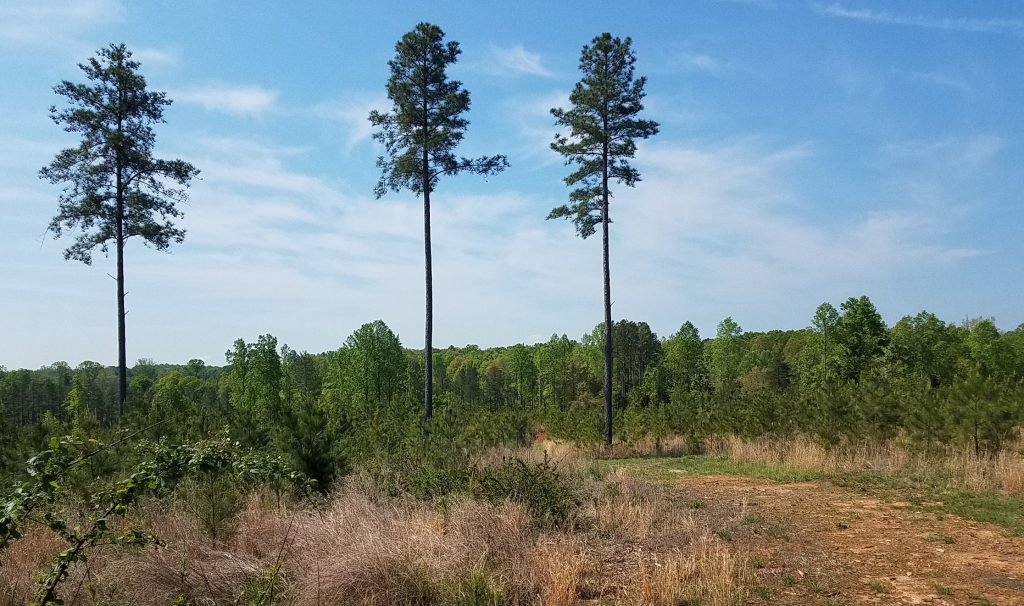
Tuesday, May 8, 2018
Virginia accents are diverse and beautiful. They are not generally like the stereotypical southern accents you hear on TV, often done by non-southern actors. Rather, there is a polite, melodious softness.
A great thing about talking to forestry folks is that they often have a species of Virginia accent with a college education, as many has graduated from Virginia Tech or North Carolina State.
I think it a little ironic that when Washington, Jefferson or Madison are depicted on TV or in movies, they usually have a kind of British accent. More likely these Virginians spoke like Virginians.
This is the Day #2 of our Virginia forestry Odyssey. Of tree farmers are acquitting themselves well. They have up-to-date management plans and we find there land ethics etched on the land itself. It is gratifying to me and I am proud of my small role in Virginia tree farming.
We are very lucky to have such great cooperation with Virginia Department of Forestry. Tree Farm could not do its work w/o these friends. We help each other.
Certification is important. Tree farmers still do not see the benefits in the form of higher prices for their forest products, but in the longer run certification is part of our broader social license to operate. It is a public affirmation of our commitment to regenerative forestry, making clean water and living soils a forest product.
The Commonwealth has three big eco-regions and lots of smaller ones. The big ones are the flat tidewater, which turns to Piedmont roughly at I-95. Piedmont transitions to mountains more or less along US 29.
——————————-
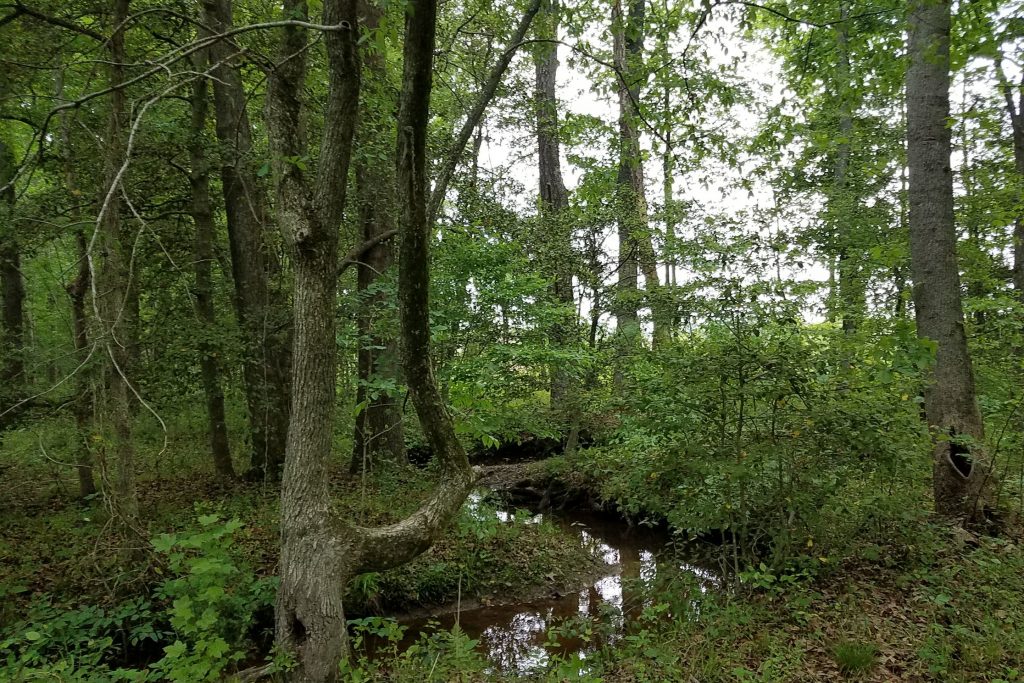
Monday, May 7, 2018
We started our Virginia Tree Farm Odyssey today. We will be visiting twenty-one certified tree farms in the Commonwealth over the next week as part of an assessment by the national American Tree Farm System. Virginia is representative of the southern states this year.
So far it seem to be okay. The assessor says that he likes what he sees and there have been no significant problems or violations.
I am proud of the work we do in Virginia forestry. Virginia DoF inspects all harvests, but does not lay a heavy hand on landowners. The assessor if from Washington State. We talked a little about the differences between Virginia and the West Coast. Suffice it to say that I am very glad to be in Virginia.
There are lots of ecological differences between our forests and those on the West Coast, but one reason why they have so many more problems with bugs and fires is because it is much harder there to practice good forestry. In Virginia, we can thin and we can burn much easier, because of more reasonable regulations and better local markets for small wood. This means we can anticipate and often avoid insect infestations and we can preemptively burn on our terms and avoid many disastrous forest threatening wildfires. Wildfires and insect infestations are both natural and caused by human action or lack of proper action.
Our tree farmers reported manageable problems. We must be grateful that in Virginia we enjoy a relatively benign environment. We have not had a big outbreak of southern pine beetle for sixteen years. Some of this is good luck, but our regular thinning is very helpful. Most of Virginia is low risk for fusiform rust, a fungal disease that harms loblolly, and improved seedlings have almost eradicated it. We have invasives like kudzu, multiflora rose and ailanthus, but these are not overwhelming. We don’t have many poison snakes, maybe a few cottonmouths and timber rattlers, but I have never seen any. Ticks are probably the most annoying menace.
Anyway, we finished up in Brunswick County today and will go up toward Blackstone tomorrow morning.
Timber Harvest – Brunswick County, May 14, 2018

Went down to the farms to see the harvest. We are thinning around 80 acres to 50 basal area (trees very far apart). We are also clearing 1/4 acre on every acre and clearing about four acres that were overstocked.
My plan is to plant longleaf on the 1/4 acre clearings and on the four acres, as well as some under the remaining loblolly. The idea is that we will do a final harvest of the loblolly in about ten years and the longleaf will be established.
In the meantime, the thinned acreage will be wonderful wildlife habitat. We will burn and plant pollinator habitat, which will also make the diverse habitat even better.
My pictures show the harvesting. Clear cuts look like hell,but they are wonderful habitat in the year after, especially for bobwhite quail. The early succession habitat provided food and the brambles that inevitably grow provide cover.
First picture shows the machine doing the thinning. The machine grabs and cuts the trees. Next shows a cutter and a chipper. After that is a log truck arriving. Last is video of the thinning. It is a little hard to see the machine.
Brodnax Fire
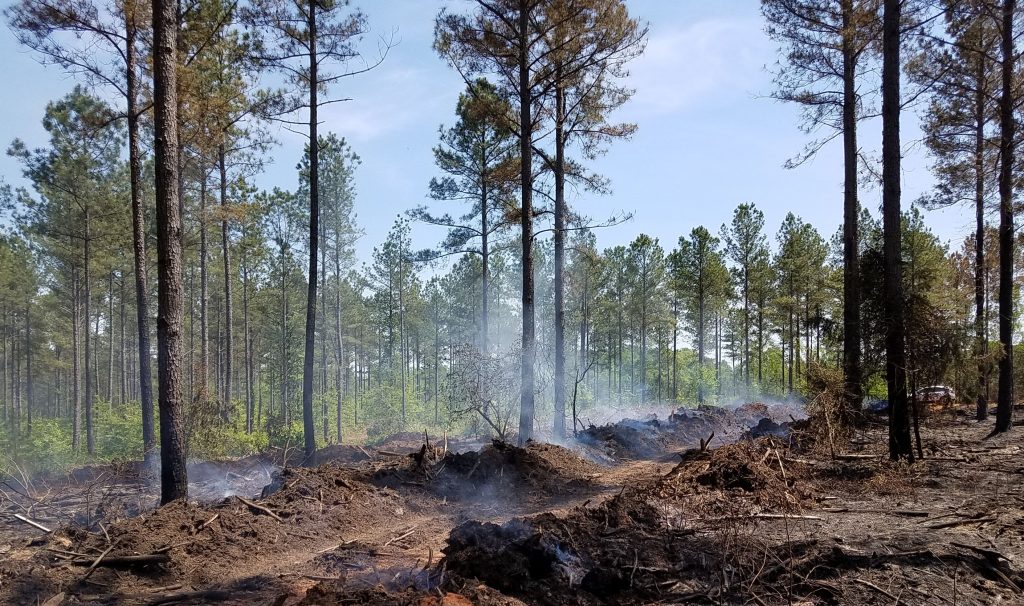
Science & experience tells me that everything will be okay, but I still worry about my trees. Convention from the hot fire gets all the way up the trees and singes the needles. I expect that lots of them will fall off. I have reasonable confidence intellectually that most of the trees will grow back better than ever, but I don’t feel it.
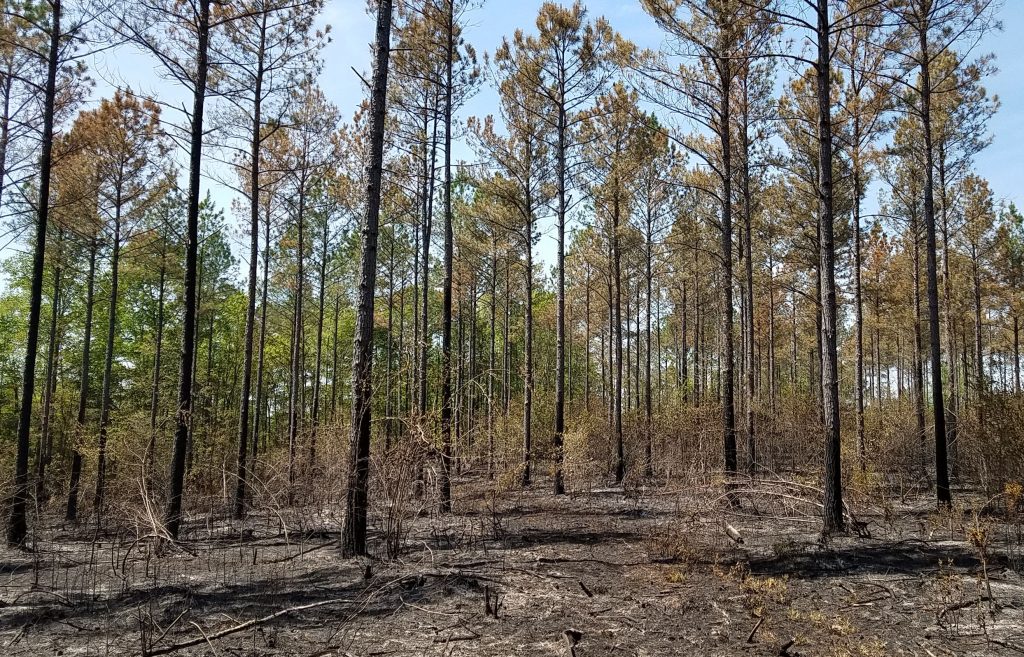
Found time between presentations to rush down and look at my newly burned forest. The forest floor is very clear now. You can easily walk through. We are doing patch burns of 1/3 each year for three years. This is great for wildlife and it puts more life, and carbon into the soils.
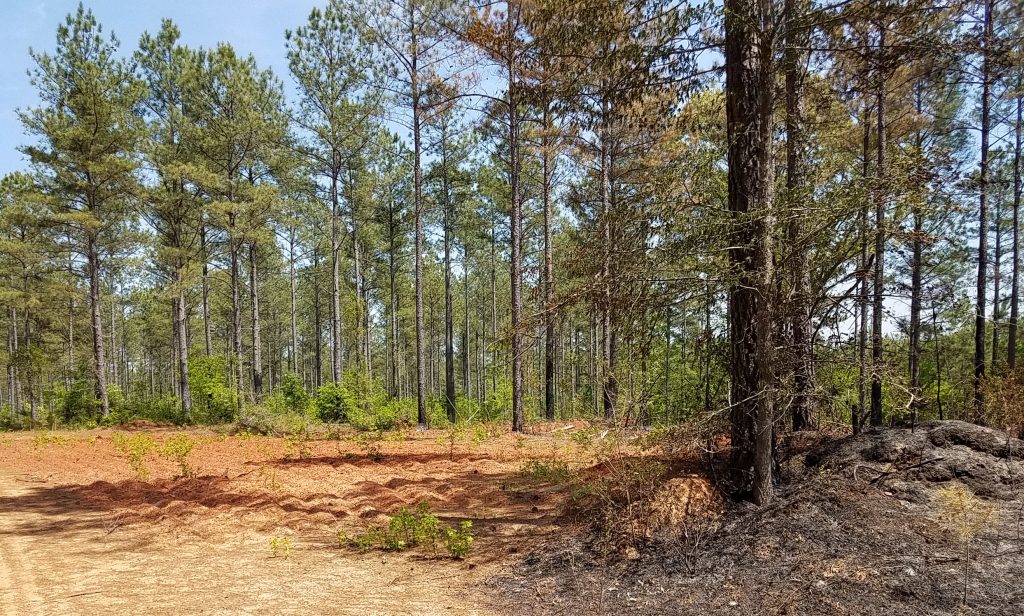
You can judge the fire by the color it leaves behind. Black is good. That means the fire has put a good char w/o destroying the life of the soil. White is not good but still okay. That is ash. The fire was a little too hot, but things are still okay probably. When you see red, you got trouble. Virginia clay is red (actually kind of orange.) If you burned down to that, the fire was too hot and destructive. In the really bad cases, the fire essentially bakes the clay into a kind of porcelain and nothing much will grow for a long time. Fortunately, we got the black.
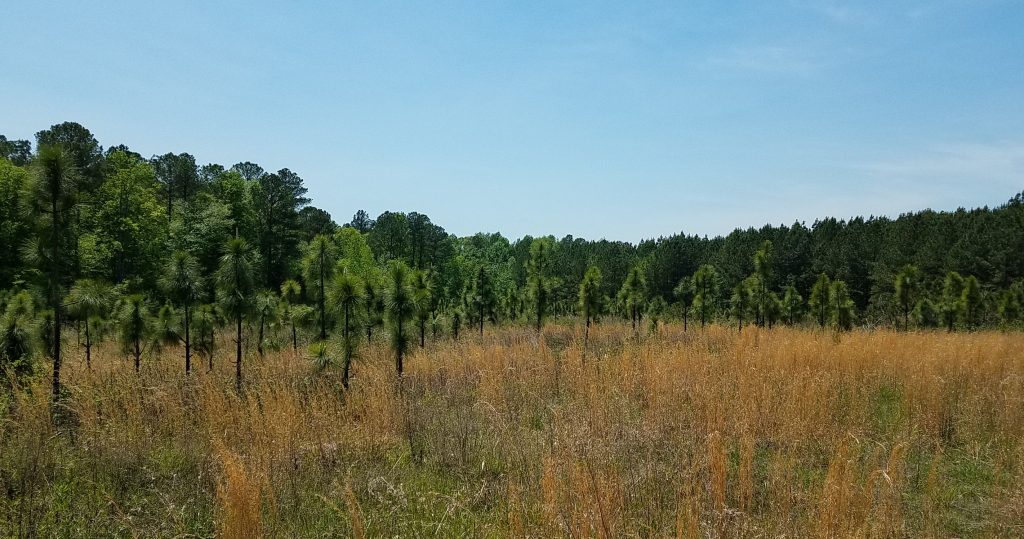
My first three pictures show the forest floor. #3 shows part of the place where my friends & neighbor Larry Walker planted some pollinator plants. It will be very pretty soon.
Picture #4 shows my longleaf and the last picture is the gas station in Lawrenceville, even cheaper than Exit 104.
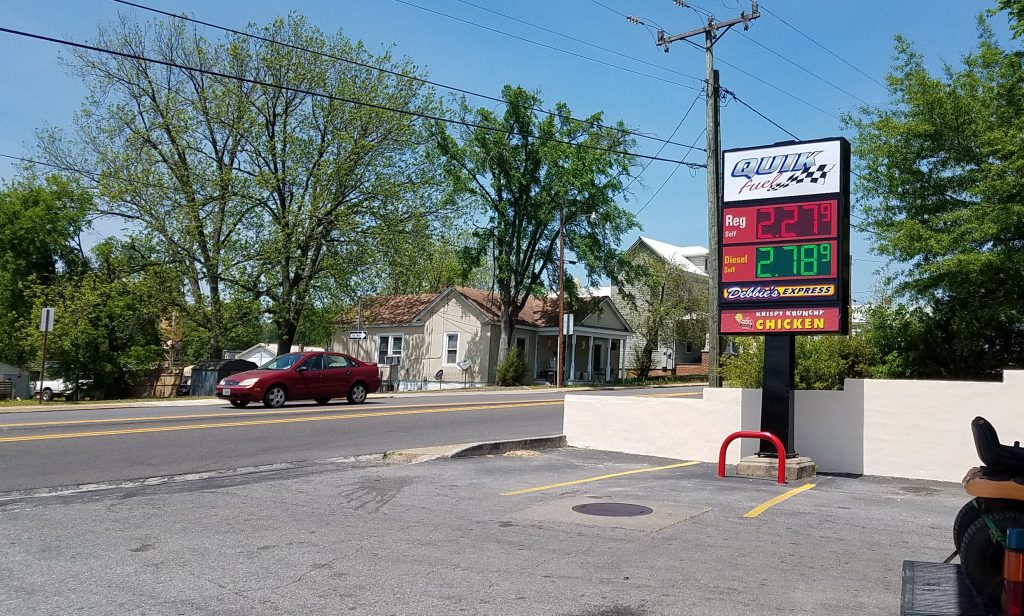
Virginia Forestry Summit 2018
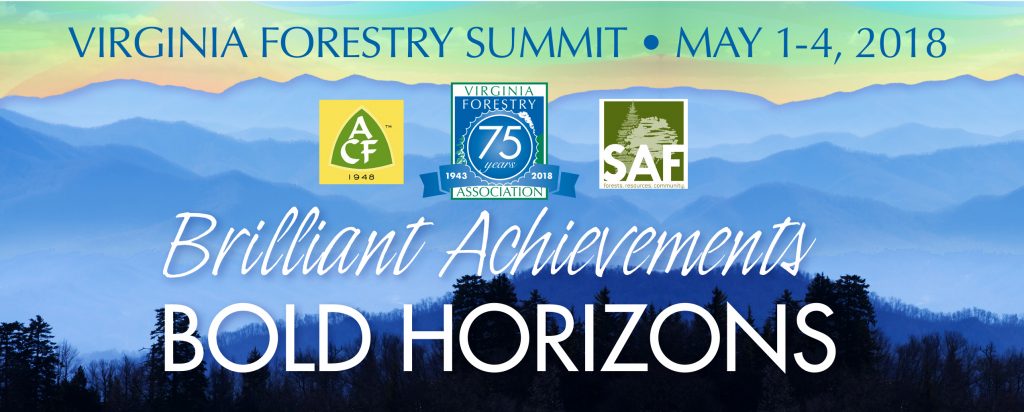
At the Virginia Forestry Summit in Richmond. It is fun to hear what people have to say about forestry meet new friends and catch up with old ones. In-person events are important for that. In theory, you could learn more from watching on the web, but you miss the serendipity of unplanned meetings. I also find that I pay less attention if I am on the web. It is too tempting to “multitask” when you are sitting at home.
A good example of the personal contact has to do with CLT. I ran into a guy who works at a major Virginia firm with whom I had discussed CLT production. He said that he wanted to approach his top-management with the idea of making CLT. I forwarded some information and then looked for the DoF guy who works on CLT to make the connection. All of this was unplanned but not unanticipated in the broad sense. Personal meeting is useful.
The meeting started off talking about Carl Schenk. You may not have heard of him, but he is a big deal in forestry. He started the first forestry school in the USA.
Back in the late 1800s and early 1900s, lots of people worried about a “timber famine”. We were running out of wood, since forests were being cleared and not regrowing fast enough. Schenk was trained in forestry in Germany. He quickly saw that American forests were different, but adapted techniques. We still are using some of the concepts he introduced,although much modified by our greater understanding. We can see farther because we stnd on the shoulders of giants like Schenk.
Interestingly, we no longer talk of timber famine. In fact we have a kind of “timber obesity” i.e. so much wood available that prices are very low. In the Southeast, we have a glut of mature timber. Given the low number of housing starts in the last ten years, we have an oversupply. One speaker said that we have 35% more standing mature pine in the Commonwealth than we did ten years ago. Even if housing picks up, it will take years to work through this surplus, so we cannot expect prices to go up much for saw timber, even if housing picks up. BTW – the price of lumber is going up much faster, but that is not due to cost of wood.
I will write more later. I have to get going now to attend today’s program.
Virginia Forestry Summit
Burning under the loblolly
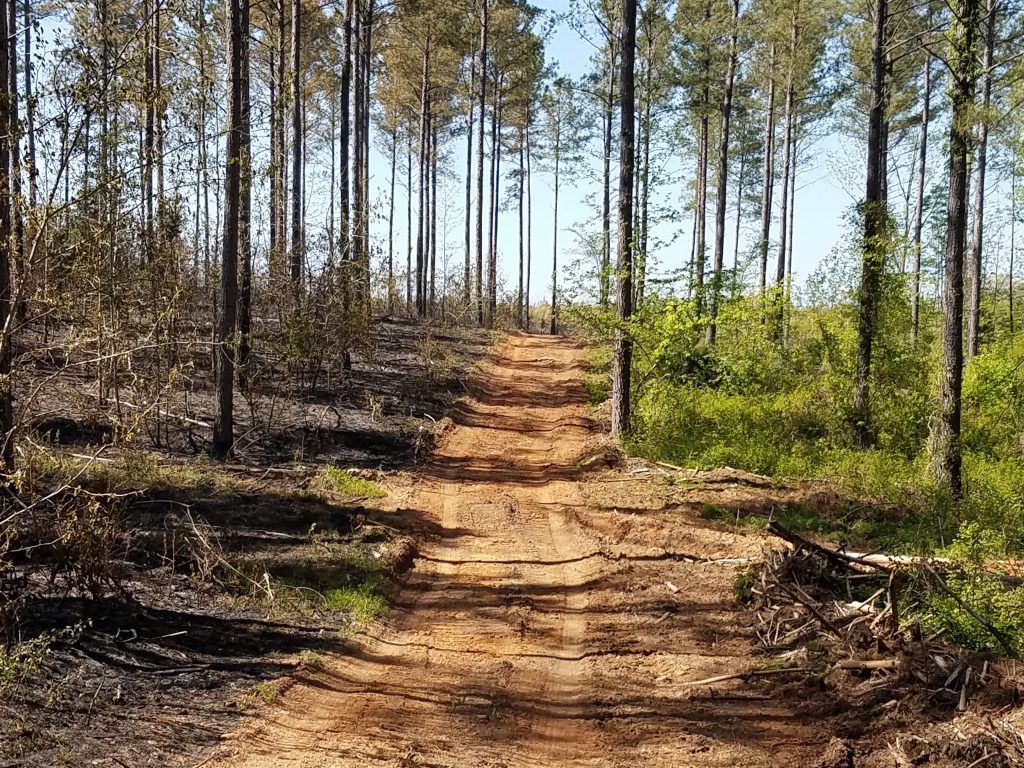
Virginia Department of Forestry (Adam Smith) did the first understory burn on the Brodnax place today. This was a growing season burn. The science tells us that this should kill the brush and encourage the growth of grass and forbs. A dormant season burn top-kills the brush, but they grow back. the wildlife and ecological effects are significant. It is likely that the “natural” burns were more likely in the growing season, since they were set off by lightning and thunderstorms come a lot more often in May than in December.
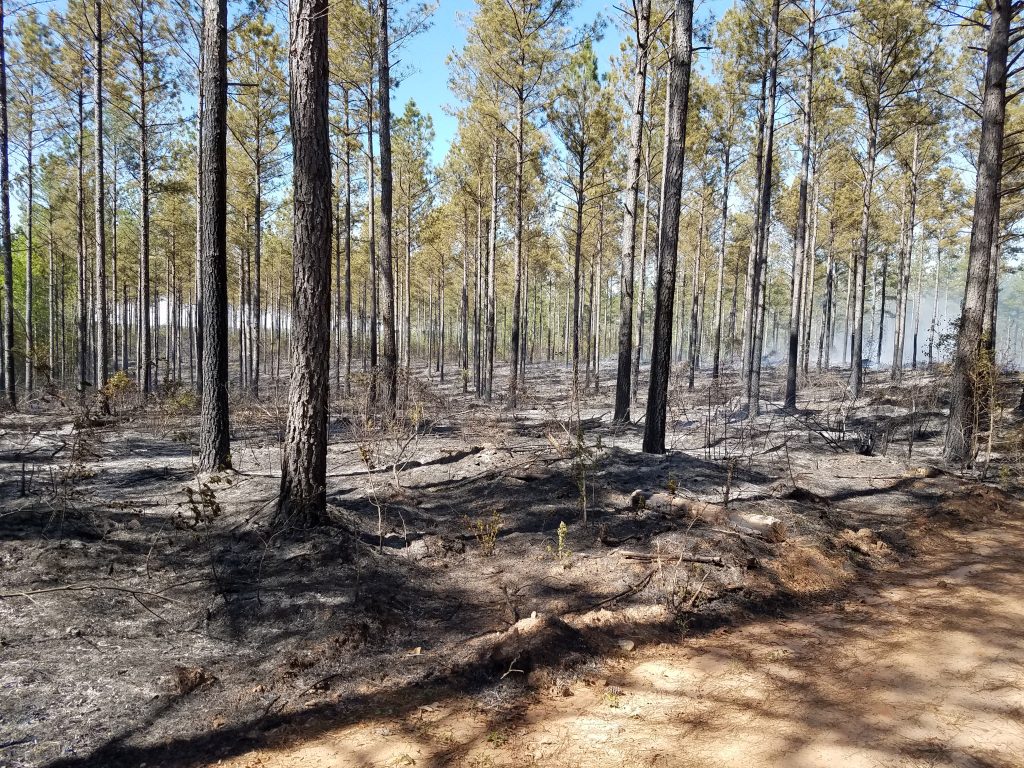
We are burning 1/3 of the property each year, following a plan we agreed with the NRCS. This is supposed to encourage wildlife habitat and add carbon to the soils. It is a fun experiment. The pictures show the woods after the burn and the part not burned for comparison.
The hunt club is going to plant pollinator habitat on the loading decks and around the burned area. Next fall the seeds should spread into the burned area and next spring it should be glorious.
I have to get down and have boots-on-the-ground experience.
April 2018 forest
Went down to the farms. Still not much action. Spring is a little late this year. An interesting thing is in my second picture. I am calling these Lazarus trees. They sure looked dead, but if you look close you see that they have new growth. It is not much yet, but seeing any is odd.
I did a few hours of vine pulling and clearing at the Brodnax place. I have kinda given up doing this on Diamond Grove. My logic is that Diamond Grove is bigger (110 acres), so it is impossible to get at all of them, and it will be thinned in couple of years. That will knock down many of the vines.The Brodnax place has a stand from 2007 that is only 24 acres, so maybe manageable, and these trees are younger and so are the vines climbing them. If I get at them sooner, they will not cause so much damage and not be able to seed.
Funny thing happened today, however. I like to push through in a straight line, pulling and cutting maybe ten feet in each direction. I worked for about 3 hours when I noticed a dirt road ahead. I was a little surprised, but I sometimes find new things on land, things I missed. When I got to the road, however, I saw it was the same one I had come in, about a hundred yards down. I know that you tend to go in circles when you are lost, but this was a really graphic example. In my defense, I was not trying to pay close attention, but I do recognize my limitations.
First two pictures are the longleaf fields. The second show the Lazarus tree. Next two are the cu-over. In real life, you can see some of the little trees. They do not show up well on the picture. Last trees are my thinned trees on the Brodnax place. We will plant pollinator habitat on the dirt in front in a couple weeks. Should be very nice. I like the look of the thinned trees. They remind me of ponderosa pines in the west.
Hyperloop Coming Sooner

I heard of the hyperloop, but didn’t know much about it, nor did I think it was something feasible in the near term. The discussion at AEI – “Is the hyperloop the future of transportation” – cleared up a few things for me.

The keynote speaker was the dynamic Maryland transportation secretary and the chairman of the Maryland Transportation Authority, Pete Rahn. He did a very smart thing before starting his talk. He went around and introduced himself to the guests in the front couple of rows. I was among them. It made us pay more attention and feel closer to the subject and the man explaining it. He started off talking about the alternatives. The status quo is not working well, what with congestion growing all the time. Mr. Rahn studied maglev in Japan. They are very smooth and fast, but probably impractical for Maryland & Washington. Maglev are expensive, and they take up a lot of space. It is unlikely that they could get the space.
Mr. Rahn said that the future is not far off for hyperloop. In fact, it is almost here. Work has started on a near New York Avenue in the District. The advantage of hyperloop is that it is underground. This is not a panacea. There are lots of things underground that need be considered. That is why the hyperloop will follow MD 295 to Baltimore. There are fewer property owners to consider. It should have no impact on the road above. The idea is for it to reach New York.
Hyperloop will compete mostly with Amtrak. Private autos have the advantage of flexibility. What I did not know is that hyperloop will also carry freight. I had envisioned pods something like the size of private cars. In fact, they will be more like airlines. The freight pods must be designed to be intermodal, or the hyperloop needs be designed to take standard container sizes. This is not a problem for the width, but length might be a problem around curves. The containers do not bend.
The discussion session addressed specifics. With time, they may add more stops. Maybe little pods could join with trains and split off as appropriate. For example, you might join the train on pod coming from Union Station riding in pod A. Once on the train, you could move to pod B being dropped off from the train in Columbia, MD. I envision one of those cartoon that shows how red blood cells move through the circulatory system.
A prototype Hyperloop will be tested literally in a couple days, on April 17 in France. It will go only 1.4 kilometers (less than a mile) but it will show the concept.

